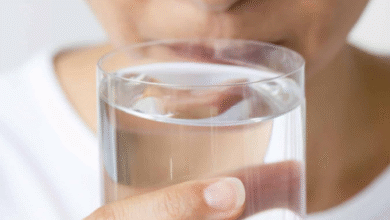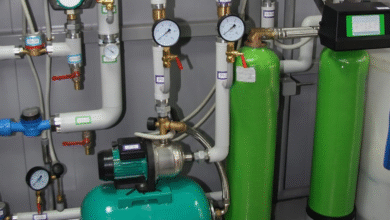Clean Water, Clear Living: A Real Look at Long Island’s Home Water Systems

There’s something about pouring a glass of water at home that feels like the most ordinary act in the world. You don’t think twice—you turn on the tap, fill it up, maybe drop in some ice, and that’s it. But here’s the truth: on Long Island, what’s flowing from your tap may not always be as simple as it looks. Beneath the surface, there’s a whole story about aquifers, minerals, and man-made contaminants. And if you live there, it’s worth asking whether your home’s setup is doing enough to keep that story clean.
I’ve had conversations with homeowners who swore the water “tasted fine” until their dishwasher kept building up strange white residue or their kids started complaining about itchy skin. It’s not alarmist to say water matters—it’s just being real. And when you start looking into solutions, you quickly run into terms like filters, softeners, UV purifiers, and whole-house systems. It can feel overwhelming, but let’s break it down in plain language.
The Unseen Puzzle of Long Island Water
Long Island is unique because almost all its water comes from underground aquifers. That sounds pure, almost idyllic—rainwater filtering through layers of sand. But reality paints a slightly different picture. Decades of suburban growth, septic systems, lawn chemicals, and industrial waste have left their fingerprints on those aquifers. Nitrates, volatile organic compounds, even emerging contaminants like PFAS—they don’t make headlines every day, but they’re out there.
This is why long island well water systems have become more than a convenience; they’re almost a quiet necessity for many households. Whether you’re drawing from a private well or relying on municipal supply, what sits behind your faucet can make or break both your health and your appliances.
What “Purification” Really Means at Home
Here’s the tricky part: purification isn’t one single device or magic bullet. When someone says they have a filter, I always want to ask, “What kind?” A simple carbon filter pitcher in your fridge? A reverse osmosis system under your sink? Or a whole-house setup that treats every drop running through your pipes?
For Long Island residents, the middle ground often isn’t enough. Hard water—rich in calcium and magnesium—can wreck water heaters and leave faucets looking perpetually chalky. Chlorine, added by municipalities for disinfection, makes showers smell like a public pool. And let’s not even start on what high iron levels can do to a white T-shirt in the wash.
That’s where residential water purification long island solutions step in. They’re tailored to fight the specific issues that crop up in this area, from sediment to strange tastes to actual health hazards. It’s not about paranoia—it’s about matching a system to the water you’re actually dealing with.
Why Softening Becomes the Unsung Hero
Out of all the technologies out there, water softening sometimes gets treated like an afterthought. But anyone who’s ever tried scrubbing stubborn soap scum off a shower door knows better. Soft water just feels different. Showers rinse cleaner, clothes come out softer, and appliances breathe a sigh of relief.
Choosing the best whole house water softener is about more than comfort. It’s about extending the life of your plumbing, lowering energy bills, and yes, making your morning coffee taste a little less metallic. The “best” will depend on your household size, your water’s hardness level, and whether you want traditional salt-based systems or modern salt-free alternatives. But dismissing softening altogether? That’s a rookie mistake on Long Island.
The Emotional Side of Water Decisions
Let’s step away from the science for a moment. Home improvements can be deeply personal. You might install a water system not because you read a report about contaminants, but because you’re tired of your toddler scratching after bath time. Or maybe you’re a couple that just spent a fortune on a renovated kitchen and refuses to let hard water spots dull the shine on your brand-new fixtures.
That’s what makes these systems more than mechanical add-ons. They affect how you experience your home every single day. Water that smells cleaner, feels softer, and tastes fresher has a quiet way of making life smoother. It’s not dramatic, but it’s real.
Sorting Through the Choices Without Losing Your Mind
If you’ve ever googled water systems, you know it’s a rabbit hole. Dozens of brands, hundreds of models, each claiming to be the most advanced, most eco-friendly, most affordable. It’s tempting to throw up your hands and stick with whatever you already have. But here’s a tip: start local.
Local water professionals know the quirks of Long Island’s aquifers better than any glossy national marketing campaign. They’ve seen the clogged pipes, the sulfur smells, the iron stains firsthand. Talking to them doesn’t commit you to buying, but it does give you a reality check tailored to your neighborhood.
Balancing Budget and Peace of Mind
Let’s be honest: these systems aren’t cheap. A pitcher filter might cost twenty bucks. A proper whole-house system? You’re looking at hundreds or even thousands. But think about the trade-offs. Replacing a water heater prematurely, constantly buying bottled water, or dealing with health concerns—that adds up too.
I’ve found many families think about it the way they think about insurance. You don’t celebrate writing the check every month, but you sleep better knowing it’s there. That’s what water systems buy you: quiet confidence that the water running through your home isn’t working against you.
Where the Future Points
The conversation around water quality isn’t slowing down. With new contaminants being studied and regulations constantly shifting, staying informed matters. Technology keeps evolving too. Smarter softeners that adjust automatically, purification systems that use less waste, even app-connected filters that remind you when it’s time for maintenance—all of these are moving from luxury to standard.
For Long Island, where water has always been a bit complicated, that evolution is a good thing. It means homeowners won’t be left guessing. It means cleaner, safer, more reliable water without the daily stress of wondering what’s actually in your glass.
A Thoughtful Ending
At the end of the day, water is life. It sounds dramatic, but it’s the one thing in your home you can’t just “do without.” You can skip the fancy countertops, delay repainting the living room, or live with an old sofa for another year. But water? That’s non-negotiable.
So if you’re sitting in your Long Island kitchen right now, wondering whether your system is enough, take it seriously. Ask questions. Test your water. Talk to a professional. Because peace of mind doesn’t come from ignoring what you can’t see—it comes from knowing you’ve done something about it.
And when you finally sip that glass and realize it tastes fresher, feels smoother, and leaves nothing behind but satisfaction, you’ll understand: investing in water isn’t about luxury. It’s about living better, every single day.




